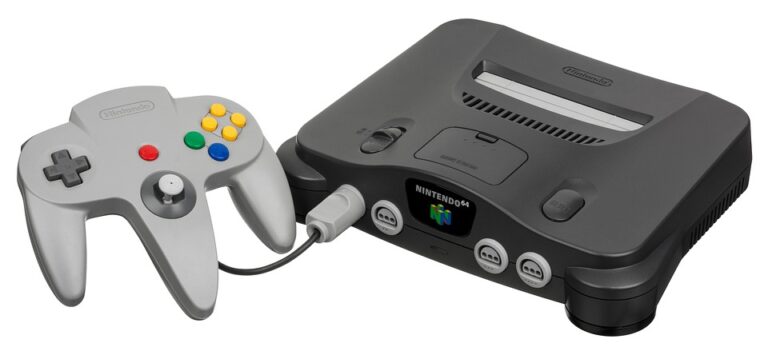Game Engines Explored: Unreal vs. Unity and Their Graphics Capabilities
In the rapidly evolving world of game development, the choice of game engines plays a crucial role in the quality of gaming graphics. Two of the most widely used game engines today are Unreal Engine and Unity. Each of these platforms offers unique features and capabilities, especially in terms of how they handle graphics. In this article, we’ll explore the graphics capabilities of Unreal vs. Unity, shedding light on their strengths and weaknesses for aspiring developers and gaming enthusiasts alike.
Understanding Gaming Graphics
Gaming graphics refer to the visual elements of a video game, including character models, environments, lighting, and special effects. These elements significantly impact a player’s experience, making high-quality graphics vital for attracting and retaining gamers.
Unreal Engine: A Graphical Powerhouse
Unreal Engine, developed by Epic Games, is revered for its unparalleled graphical fidelity. Known for its high-quality rendering and realistic textures, Unreal has powered blockbuster titles such as Fortnite and Gears of War 4.
Key Features of Unreal Engine
- Photorealistic Rendering: Unreal Engine employs advanced rendering techniques such as ray tracing, which mimics the way light interacts with objects in the real world. This results in strikingly realistic lighting and shadow effects.
- Blueprints Visual Scripting: For those who may not have extensive programming skills, Unreal’s Blueprints offer a user-friendly way to develop complex game mechanics while maintaining high-quality graphics.
- Robust Asset Marketplace: Developers can access an extensive library of graphics assets, from terrain to character models, which can enhance the visual quality of their projects without starting from scratch.
According to the latest industry data, around 30% of game developers prefer Unreal Engine for high-fidelity graphics due to its capabilities in producing photorealistic visuals (Source: Game Developer Survey 2023).
Unity: Versatile and Accessible
Unity, on the other hand, is renowned for its accessibility and versatility, appealing to both indie developers and large studios. While some may view Unity as less capable in terms of graphics compared to Unreal, it boasts its own strengths and can produce stunning visuals, particularly for 2D games and mobile platforms.
Key Features of Unity
- User-Friendly Interface: Unity’s intuitive interface allows newcomers to dive into game development without extensive training, making it one of the most popular options for startups and indie developers.
- Multi-Platform Support: Unity is designed for cross-platform development, enabling developers to create games that run seamlessly on various devices, including mobile, console, and PC.
- Asset Store: Like Unreal, Unity’s Asset Store provides a plethora of resources that can significantly reduce development time while enhancing graphics quality.
In recent statistics, approximately 50% of game developers report using Unity, citing its ease of use and flexibility, especially for mobile games (Source: Game Developer Survey 2023).
Graphics Performance: A Comparison
When discussing gaming graphics, performance is a crucial aspect to consider. Here’s a quick comparison:
| Feature | Unreal Engine | Unity |
|---|---|---|
| Rendering Quality | High-end, photorealistic | Good quality, especially for 2D |
| Asset Import Options | Extensive, supports high-poly | Flexible, but optimization required |
| Mobile Optimization | Less optimized | Highly optimized for mobile |
Analogy: Choosing the Right Game Engine
Think of game engines like different types of cars. If Unreal Engine is akin to a high-performance sports car—offering speed and graphical quality—Unity is more like a reliable SUV, providing versatility and practicality. Your choice depends on the kind of game you’re developing and the experience you want your players to have.
Conclusion
Ultimately, the choice between Unreal Engine and Unity hinges on the specific needs of the project. Unreal might be the go-to for developers intending to create visually stunning, immersive experiences, while Unity is perfect for those valuing cross-platform accessibility and ease of use.
Both engines cater to different niches within the gaming industry, and their graphics capabilities are a testament to their respective strengths. Moving forward into the expansive future of gaming, developers must weigh their options carefully to achieve the desired visual fidelity and performance for their titles.
For more insights on game development, check out these articles on buzzo.live:
Additionally, for more in-depth discussions on game engines, visit Epic Games on Unreal Engine’s official page and Unity’s official learning resources.
Suggested Images
-
Image of Unreal Engine Game Graphics
Alt text: Gaming Graphics created with Unreal Engine
- Image of Unity Game Development Interface
Alt text: Gaming Graphics featuring Unity’s development interface
By conducting a thorough investigation into Unreal Engine and Unity, developers can better position themselves in the competitive landscape of gaming graphics, making informed decisions that can lead to remarkable games that resonate with players.


